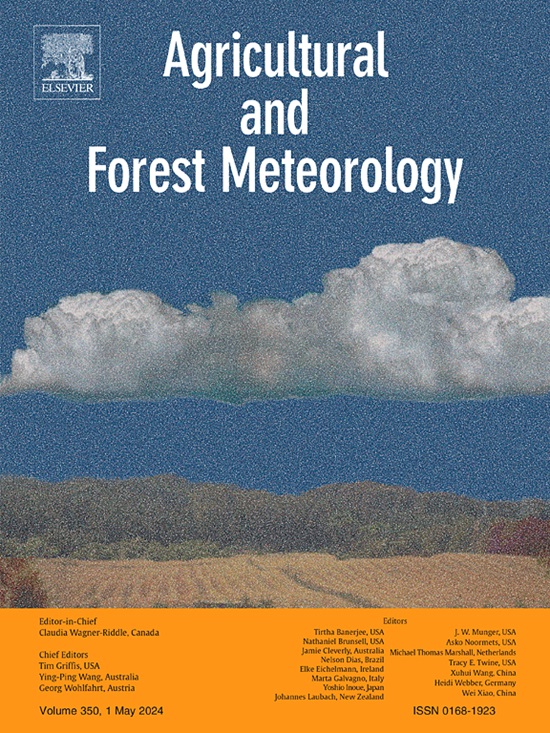Identifying cumulative transition effects of large-scale vegetation restoration on climate and hydrology via a dynamically separating framework
IF 5.6
1区 农林科学
Q1 AGRONOMY
引用次数: 0
Abstract
Vegetation restoration is an important approach to improve ecosystems and address climate warming. However, there is significant debate regarding climate and hydrological impacts of large-scale vegetation restoration. This study proposes a framework for dynamically separating the cumulative climate and hydrological effects of vegetation restoration, offering a perspective on the seasonal and regional variations in these effects. The framework applies WRF-NoahMP land-atmosphere coupled model with various surface parameters to distinguish the seasonal climate and hydrological effects of the Grain for Green Program as well as the inconsistency in climate and hydrological effects between important grassland restoration and afforestation regions. The Middle Yellow River Basin, a region severely impacted by large-scale vegetation restoration, was selected to demonstrate the proposed approach. The results indicate that seasonal variations in albedo, fraction of vegetation cover, and leaf area index contribute to distinct seasonal patterns in the climate and hydrological effects of vegetation restoration in the study region, with maximum effects observed in summer. A significant shift in the cumulative climate and hydrological effects occurred around 2010 during 2001-2020. Compared to the afforestation region, the grassland restoration region showed significantly reduced land surface temperature and soil moisture, and enhanced evaporation and precipitation recycling (p < 0.05). Our study contributes to an efficient method for distinguishing the seasonal cumulative climate and hydrological effects of vegetation restoration, as well as the inconsistency in climate and hydrological effects resulting from afforestation and grassland restoration regions, providing insights to better implement vegetation restoration initiatives.
求助全文
约1分钟内获得全文
求助全文
来源期刊
CiteScore
10.30
自引率
9.70%
发文量
415
审稿时长
69 days
期刊介绍:
Agricultural and Forest Meteorology is an international journal for the publication of original articles and reviews on the inter-relationship between meteorology, agriculture, forestry, and natural ecosystems. Emphasis is on basic and applied scientific research relevant to practical problems in the field of plant and soil sciences, ecology and biogeochemistry as affected by weather as well as climate variability and change. Theoretical models should be tested against experimental data. Articles must appeal to an international audience. Special issues devoted to single topics are also published.
Typical topics include canopy micrometeorology (e.g. canopy radiation transfer, turbulence near the ground, evapotranspiration, energy balance, fluxes of trace gases), micrometeorological instrumentation (e.g., sensors for trace gases, flux measurement instruments, radiation measurement techniques), aerobiology (e.g. the dispersion of pollen, spores, insects and pesticides), biometeorology (e.g. the effect of weather and climate on plant distribution, crop yield, water-use efficiency, and plant phenology), forest-fire/weather interactions, and feedbacks from vegetation to weather and the climate system.

 求助内容:
求助内容: 应助结果提醒方式:
应助结果提醒方式:


